Welcome to the ultimate guide for working with Siser heat transfer vinyl (HTV). This comprehensive resource covers essential tips‚ settings‚ and techniques for achieving professional results.
Overview of Siser Heat Transfer Vinyl (HTV)
Siser Heat Transfer Vinyl (HTV) is a popular choice among crafters and professionals for creating custom designs on fabrics. Known for its vibrant colors and durability‚ Siser HTV offers a wide range of styles‚ including EasyWeed‚ Holographic‚ Glitter‚ and Foil. Each type is designed to deliver sharp‚ long-lasting results with minimal effort. Siser HTV is compatible with various fabrics and heat press settings‚ making it versatile for projects like t-shirts‚ bags‚ and home decor. Its ease of use‚ combined with high-quality finishes‚ makes it a favorite for both beginners and experienced creators.
Importance of Proper Heat Application
Proper heat application is essential for ensuring a strong bond between the vinyl and fabric‚ preventing peeling or adhesion issues; Incorrect temperature or pressure can damage the vinyl or fabric‚ while insufficient time may result in incomplete transfers. Heat presses must be preheated to the recommended settings for the specific vinyl type. Even pressure ensures consistent adhesion‚ avoiding bubbles or wrinkles. Monitoring time and temperature closely helps achieve durable‚ long-lasting results. Proper heat application is key to achieving professional-looking designs that withstand washing and wear‚ making it a critical step in the vinyl application process.
Key Factors in Successful Vinyl Application
Success in vinyl application depends on material compatibility‚ design preparation‚ and tool quality. Ensuring the fabric or surface is compatible with the vinyl type is crucial for proper adhesion. Designs must be mirrored and cut correctly to align with the pressing area. Using high-quality tools‚ like a reliable heat press and sharp cutting blades‚ ensures precise results. Environmental factors‚ such as humidity and temperature‚ can also impact application. Cleanliness of the workspace and material surface further enhances adhesion. Attention to these details ensures a professional finish and long-lasting durability of the vinyl design.

Types of Siser Heat Transfer Vinyl
Siser offers a variety of heat transfer vinyl types‚ each with unique characteristics‚ including EasyWeed‚ Stretch‚ Holographic‚ Glitter‚ Foil‚ EasyPuff‚ and Electric‚ catering to diverse crafting needs.
Siser EasyWeed
Siser EasyWeed is a popular heat transfer vinyl known for its lightweight‚ durable‚ and easy-to-cut properties. It is ideal for beginners and professionals alike‚ offering a wide range of colors and finishes. EasyWeed is compatible with most fabrics‚ including cotton‚ polyester‚ and blends‚ making it versatile for various projects. Its thin‚ flexible design ensures a soft feel after application. Available in glossy‚ matte‚ and specialty finishes‚ it allows for vibrant‚ long-lasting designs. EasyWeed is a great choice for custom apparel‚ such as t-shirts‚ hoodies‚ and bags. Its ease of use and excellent durability make it a favorite among crafters and small businesses.
Siser EasyWeed Stretch
Siser EasyWeed Stretch is a versatile heat transfer vinyl designed for stretchy fabrics like spandex‚ polyester blends‚ and performance wear. Its unique stretchability ensures designs remain intact even after repeated washing and wear. The vinyl features a built-in crossover liner‚ eliminating the need for additional transfer tape. It is ideal for creating custom designs on activewear‚ leggings‚ and other stretchable materials. EasyWeed Stretch offers excellent durability while maintaining a soft‚ flexible finish. With proper application using a heat press‚ it provides long-lasting results. This vinyl is perfect for projects requiring both style and functionality.
Siser Holographic
Siser Holographic vinyl offers a vibrant‚ metallic finish that adds a reflective‚ eye-catching element to designs. Perfect for creating dazzling effects‚ it is ideal for fashion apparel‚ accessories‚ and decorative items. The vinyl features a shiny‚ mirror-like surface that shifts colors depending on the angle of light. It is durable and maintains its appearance through washing and wear. Siser Holographic is compatible with most fabrics and works well with heat presses. For best results‚ ensure proper temperature and pressure settings during application. This vinyl is a great choice for projects requiring a modern‚ futuristic look.
Siser Glitter
Siser Glitter vinyl adds a sparkling‚ textured finish to designs‚ making them stand out. It is perfect for creating decorative and festive designs on apparel‚ accessories‚ and crafts. The vinyl features a thick‚ glittery layer that provides a dynamic visual effect. Durable and long-lasting‚ it retains its sparkle even after multiple washes. For best results‚ apply Siser Glitter with appropriate heat and pressure settings. It is compatible with most fabrics and works well with heat presses. Ideal for projects requiring a glamorous‚ eye-catching appearance‚ Siser Glitter is a popular choice for DIY enthusiasts and crafters seeking to add extra flair to their creations.
Siser Foil
Siser Foil offers a vibrant‚ metallic finish that adds a luxurious shine to designs. Available in various colors‚ it is ideal for creating eye-catching graphics on fabrics‚ accessories‚ and hard surfaces. The foil is durable and maintains its reflective appearance through multiple washes. It is compatible with cotton‚ polyester‚ and blends‚ making it versatile for diverse projects. For optimal results‚ apply Siser Foil with the appropriate heat and pressure settings. Its metallic sheen and long-lasting adhesion make it a popular choice for fashion apparel‚ accessories‚ and custom gifts‚ ensuring designs stand out with a professional finish.
Siser EasyPuff
Siser EasyPuff is a unique heat transfer vinyl designed to create a puffed‚ dimensional effect. It adds a 3D-like texture to designs‚ making them stand out. Ideal for fashion apparel‚ accessories‚ and home decor‚ EasyPuff is flexible and durable. It can be layered with other vinyl types for complex designs. Apply it using a heat press with medium pressure and temperature. EasyPuff works best on cotton‚ polyester‚ and blends. Its versatility and vibrant finish make it perfect for creating eye-catching‚ professional-looking projects with added depth and dimension. Proper application ensures long-lasting results with minimal peeling or cracking over time.
Siser Electric
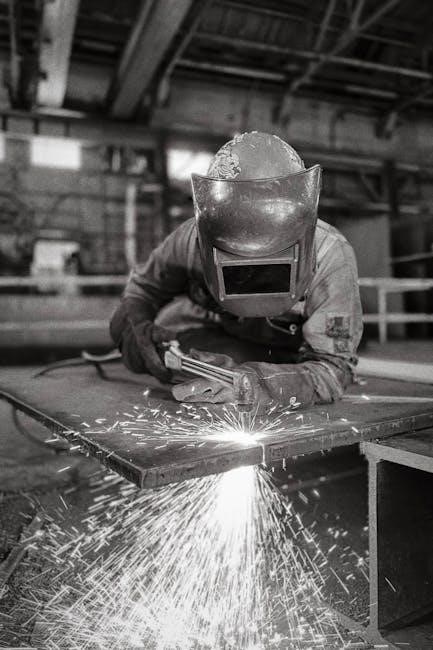
Siser Electric is a vibrant heat transfer vinyl designed to add a dynamic‚ eye-catching finish to projects. It features a metallic sheen‚ making it ideal for creating bold‚ reflective designs. Perfect for fashion apparel‚ accessories‚ and promotional items‚ Electric vinyl offers excellent durability and wash resistance. It works best on cotton‚ polyester‚ and blended fabrics. Apply it using a heat press with medium pressure and temperature. Electric vinyl is easy to cut and weed‚ ensuring sharp‚ intricate designs. Its unique finish makes it a great choice for those looking to add a modern‚ polished look to their creations with minimal effort.
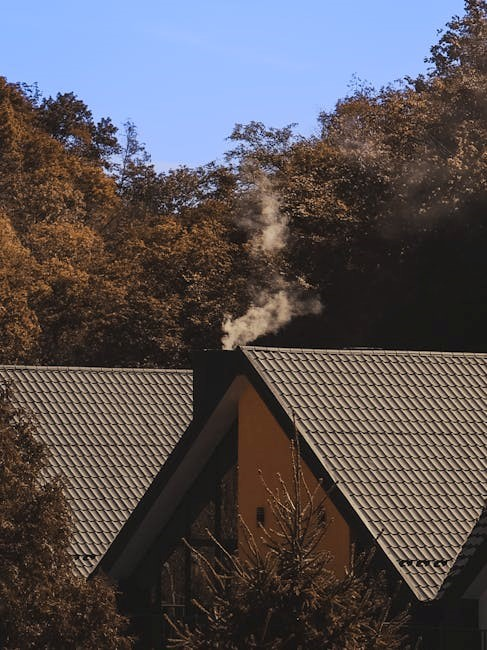
Tools and Equipment Needed
Heat press‚ cutting tools like cutters or scissors‚ and accessories such as transfer tape and a weeding tool are essential for successful vinyl application.
Heat Press Requirements
A heat press is the cornerstone of Siser vinyl application. It must have a temperature range of 280°F to 330°F and a timer for precise control. A digital display is ideal for accuracy. The press should apply consistent medium to high pressure‚ ensuring full contact with the vinyl. A clamshell or swing-away design is recommended for even heat distribution. Preheating the press before use is essential for optimal results. Ensure the press fits your project size‚ whether small or large. Proper calibration and maintenance of the heat press are crucial for consistent performance and durability.
Cutting Tools for Vinyl
Accurate cutting tools are essential for Siser vinyl projects. A high-quality vinyl cutter‚ such as a Silhouette or Cricut‚ ensures precise cuts and intricate designs. For manual cutting‚ craft knives or rotary cutters are ideal for small details. Cutting mats protect your work surface and improve accuracy. Weeding tools‚ like a weeding hook or scraper‚ help remove excess vinyl efficiently. Sharp blades are crucial for clean cuts‚ so replace them regularly. Use the right tool for your project size and complexity to achieve professional results. Proper cutting tools prevent wasted material and ensure your design is ready for application.
Accessories for Application
Essential accessories enhance the vinyl application process. Transfer tape is crucial for smoothly moving cut designs to fabrics‚ available in varying strengths for different materials. Squeegees or scrapers ensure even pressure‚ preventing air bubbles. A laser alignment tool aids in precise placement on garments. Trimming tools or scissors are handy for cutting excess vinyl around designs. Protective sheets or parchment paper prevent direct contact with the heat press‚ avoiding damage. Optional accessories like alignment grids or application gloves further improve accuracy. These tools collectively ensure a seamless and professional application of Siser vinyl‚ making the process efficient and stress-free.
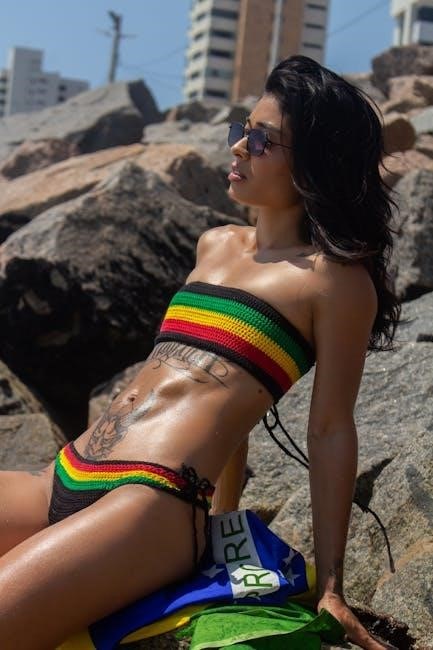
Application Instructions
Apply Siser vinyl by cutting‚ weeding‚ and pressing designs. Use transfer tape for smooth placement‚ aligning with your substrate. Press at recommended settings‚ then peel tape carefully.
Preparing Your Design
Start by creating or editing your design using software like Adobe Illustrator or CorelDRAW. Ensure high resolution for clarity. Mirror text designs before cutting. Use a vinyl cutter with settings suited for Siser vinyl‚ adjusting blade depth and pressure as recommended. After cutting‚ carefully weed excess vinyl with specialized tools to avoid damaging the design. Apply transfer tape securely‚ possibly using a squeegee for proper adhesion. Align the design on the garment using tools like rulers for accuracy. Double-check all settings to prevent errors and achieve professional results.
Applying the Vinyl
Place the garment on the heat press‚ ensuring a flat and stable surface. Position the vinyl design centered and aligned with the desired area. Set the heat press to the recommended temperature‚ pressure‚ and time based on the vinyl type. Once pressed‚ allow the vinyl to cool slightly before peeling the transfer tape. For hot peel‚ remove the tape immediately‚ while cold peel requires letting it cool completely. Use a squeegee to ensure proper adhesion. Avoid stretching or pulling the vinyl during application. Follow manufacturer guidelines for specific vinyl types to achieve optimal results and durability.
Post-Application Care
To ensure the longevity of your Siser vinyl design‚ proper care is essential. Turn garments inside out before washing to protect the vinyl from friction. Use mild detergent and avoid bleach or harsh chemicals. Air dry or tumble dry on a low setting‚ as high heat can damage the vinyl. Avoid ironing directly over the design; instead‚ place a parchment paper or cloth barrier. Do not use abrasive cleaners or scrub the vinyl‚ as this may cause lifting or cracking. For best results‚ wash gently and avoid tight fits that may stretch or stress the design.

Heat Press Settings
Proper heat press settings are crucial for Siser vinyl application. Adjust temperature‚ time‚ and pressure based on vinyl type and fabric. Optimize for durability and adhesion.
Temperature Guidelines
For Siser vinyl‚ temperature settings vary by type. EasyWeed and similar materials typically require 300°F (149°C)‚ while Foil and Holographic need higher temperatures‚ around 320°F (160°C). Siser Glitter often requires 315°F (157°C). Always refer to the specific vinyl’s instructions‚ as excessive heat can damage fabric or cause color fading. Using a heat press with precise temperature control ensures optimal results. Lower temperatures may result in incomplete adhesion‚ while too high can risk scorching. Adjust settings based on fabric thickness and vinyl type to achieve a durable‚ long-lasting finish.
Time Settings for Different Vinyl Types
Time settings vary based on Siser vinyl type and thickness. EasyWeed typically requires 15 seconds‚ while EasyWeed Stretch may need 20 seconds for proper adhesion. Holographic and Glitter vinyls often require 25 seconds due to their reflective and textured surfaces. Foil vinyl usually needs 20-25 seconds‚ and EasyPuff may require up to 30 seconds for the dimensional effect. Adjust time based on heat press wattage and fabric type. Overpressing can damage vinyl or fabric‚ so start with shorter times and increase as needed for optimal results.
Pressure Recommendations
Proper pressure ensures even adhesion and prevents vinyl damage. Most Siser vinyls require medium to high pressure‚ typically between 3-5 bar or 40-60 PSI. EasyWeed and similar types need medium pressure for a strong bond without fabric compression. Specialty vinyls like Holographic or Glitter may require slightly higher pressure for optimal adhesion. Always check your heat press manual for specific settings‚ as machines vary. Uneven pressure can lead to incomplete transfers or damaged vinyl‚ so ensure the press applies consistent force across the design for professional results. Adjust pressure based on fabric thickness and vinyl type for best outcomes.

Peel Methods
Peel methods determine how vinyl is removed after heat application. Hot peel is done immediately‚ while cold peel occurs after cooling. The choice depends on vinyl type and design preferences.
Hot Peel vs. Cold Peel
Hot peel and cold peel methods are crucial in Siser vinyl application‚ each serving different purposes. Hot peeling is done immediately after heat pressing‚ ideal for detailed designs as it allows easy removal of excess vinyl. Cold peeling occurs after the vinyl cools‚ suitable for thicker materials like glitter or holographic‚ ensuring proper adhesion. The choice between methods depends on vinyl type‚ design complexity‚ and desired finish. Proper timing ensures clean edges and prevents stretching or distortion‚ making it essential to follow guidelines for optimal results.
When to Use Hot Peel
Hot peeling is recommended for most Siser vinyl types‚ especially when working with intricate designs or thin materials like Siser EasyWeed. It is best performed immediately after heat pressing while the vinyl is still warm‚ as this allows for clean separation of excess material without stretching the design. Hot peeling is ideal for smooth fabrics like cotton or polyester‚ ensuring crisp edges and professional-looking results. It is particularly useful for detailed cuts‚ as it minimizes the risk of vinyl lifting during the removal process‚ making it a go-to method for achieving precise and durable transfers.
When to Use Cold Peel
Cold peeling is ideal for thicker Siser vinyl types‚ such as Glitter‚ Foil‚ or Holographic‚ which may lift during hot peeling. It is best performed after the vinyl has completely cooled down‚ typically 10-15 minutes after heat pressing. This method is also recommended for stretchy fabrics or delicate materials‚ as it prevents stretching or damage. Cold peeling is slower but ensures a clean removal of excess vinyl without distorting the design. It is particularly useful for intricate cuts and layered designs‚ reducing the risk of vinyl lifting and ensuring a durable finish.
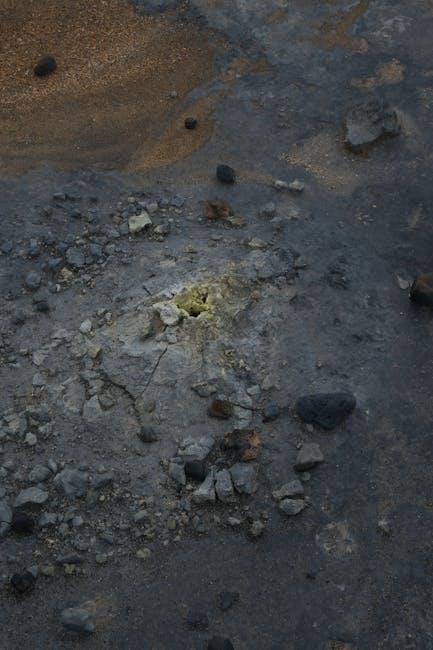
Tips for Common Issues
Adjust heat press settings for material thickness‚ ensure proper vinyl cut direction‚ and use a weeding tool to avoid common application mishaps effectively always.
Troubleshooting Adhesion Problems
Adhesion issues with Siser vinyl often arise from incorrect heat press settings or material incompatibility. Ensure the temperature matches the vinyl type (e.g.‚ 300°F for EasyWeed). Check time and pressure settings‚ as insufficient heat or pressure can prevent proper bonding. Verify fabric compatibility—Siser vinyl works best on polyester‚ cotton‚ or blends. Clean the fabric surface thoroughly before application to remove oils or residue. Allow the vinyl to cool before peeling to ensure a strong bond. If adhesion fails‚ reapply heat and pressure. Avoid using expired vinyl‚ as it may lose adhesion properties over time. Always test a small sample first.
Fixing Wrinkles and Bubbles
Wrinkles and bubbles in Siser vinyl can be resolved by applying heat and gentle pressure. Use a heat press or a household iron on a lower temperature setting (around 250°F) to smooth out the area. Place a parchment paper or Teflon sheet over the vinyl to protect it. Apply firm‚ even pressure‚ focusing on the wrinkled or bubbled sections. For stubborn bubbles‚ lightly prick them with a needle to release air before reapplying heat. Ensure the vinyl is face-up during this process. Proper application techniques‚ such as smooth transfers and avoiding stretching‚ can help prevent these issues altogether. Consistent heat and pressure are key to a flawless finish.
Preventing Color Bleeding
To prevent color bleeding when working with Siser vinyl‚ ensure proper heat press settings and material preparation. Use high-quality vinyl designed for heat transfer‚ as cheaper alternatives may bleed more easily. Pre-wash fabrics to remove finishes that could interfere with adhesion. Apply vinyl at the recommended temperature (around 300°F) and time (10-15 seconds for most types). Avoid over-pressing‚ as excessive heat can cause ink migration. Use a parchment paper or Teflon sheet to protect the vinyl during pressing. For multi-color designs‚ allow each layer to cool before adding the next. Proper application and pressing techniques will ensure vibrant‚ sharp results without color bleeding.
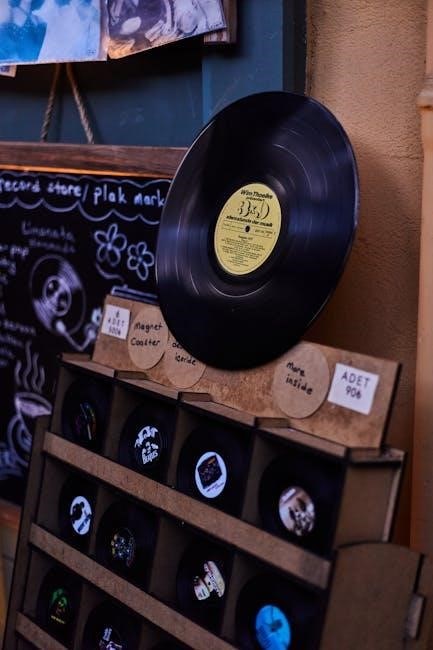
Projects and Compatibility
Explore various projects using Siser vinyl‚ including custom apparel‚ accessories‚ and home decor. Compatible with fabrics‚ polyester‚ cotton‚ and select hard surfaces for versatile crafting.
Best Fabrics for Siser Vinyl
Siser vinyl works best on cotton‚ polyester‚ and blended fabrics. Optimal results are achieved with materials like cotton-poly blends‚ especially those with a tight weave. Avoid loose-weave fabrics‚ as they may not hold the vinyl securely. For stretchy projects‚ polyester or spandex blends are ideal. Natural fibers like linen or silk are not recommended due to poor vinyl adhesion. Always ensure fabrics are clean‚ dry‚ and free of finishes or treatments that could interfere with the vinyl bonding process. Pre-washing and drying fabrics before application ensures optimal results.
Compatible Materials and Surfaces
Siser vinyl is versatile and can be applied to various materials beyond fabrics. It adheres well to ceramic‚ glass‚ and metal surfaces‚ making it ideal for customizing mugs‚ tumblers‚ and water bottles. Leather‚ wood‚ and certain plastics are also compatible‚ provided they are smooth and properly prepared. For best results‚ ensure surfaces are clean‚ dry‚ and free of oils or residues. Some materials‚ like uncoated ceramics or untreated wood‚ may require pre-treatment for optimal adhesion. Always test a small area first to ensure compatibility and durability of the vinyl application.
Creative Project Ideas
- Custom Apparel: Create vibrant designs for t-shirts‚ hoodies‚ and hats using Siser HTV.
- Home Decor: Add personalized touches to pillows‚ wall art‚ and ceramic tiles.
- Accessories: Jazz up phone cases‚ tote bags‚ and water bottles with unique designs.
- Seasonal Crafts: Make festive decorations like holiday ornaments or themed decals.
- Personalized Gifts: Design custom baby onesies‚ pet accessories‚ or sports jerseys.
Experiment with different vinyl types like Holographic‚ Glitter‚ or Foil for eye-catching effects. Mixing patterns and layering vinyl can create stunning‚ one-of-a-kind designs for any project!
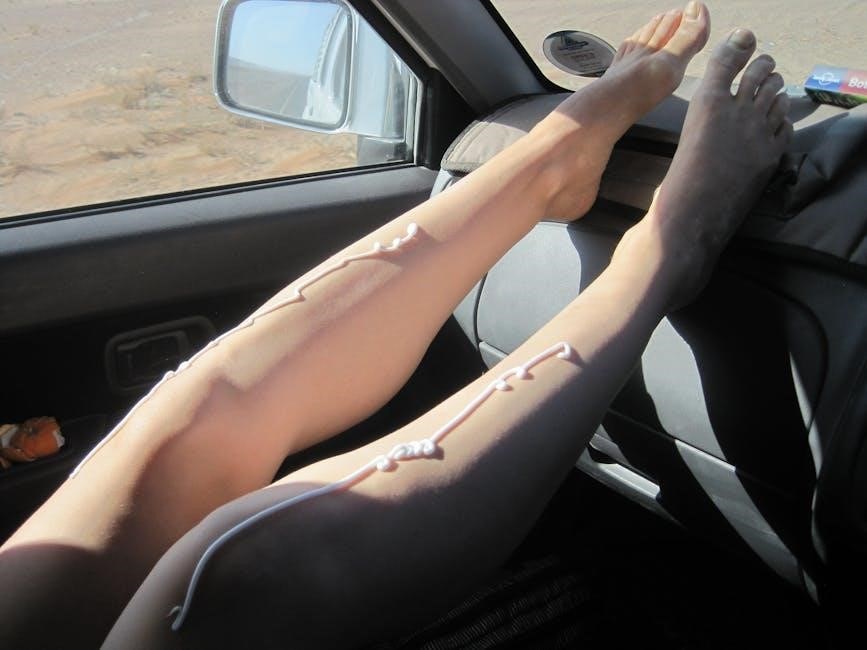
Care and Maintenance
Proper care ensures longevity. Wash inside out‚ avoid bleach‚ and tumble dry low. Iron inside out without direct heat on vinyl for best results.
Washing Instructions
For lasting durability‚ wash garments with Siser vinyl inside out using cold water and mild detergent. Avoid bleach or fabric softeners‚ as they can degrade the vinyl. Gently cycle or hand wash to prevent cracking. Do not scrub or wring the fabric‚ as this may damage the vinyl. Air dry or tumble dry on a low setting. Never iron directly on the vinyl; if necessary‚ iron inside out on a low setting without steam. Proper washing ensures the vinyl remains vibrant and adheres well to the fabric. Regular care extends the life of your custom designs.
Drying Recommendations
Air drying is the best method to preserve Siser vinyl quality. Lay the garment flat or hang it to dry away from direct sunlight. If using a dryer‚ select a low heat setting and remove immediately to prevent wrinkles. High heat can cause vinyl to crack or peel. Never dry on high heat‚ as it may damage the vinyl or fabric. For optimal results‚ avoid direct sunlight‚ which can fade colors or warp the material. Proper drying ensures the vinyl remains durable and maintains its vibrant appearance. Always follow these guidelines to extend the life of your designs.
Longevity Tips
To ensure Siser vinyl lasts long‚ avoid harsh detergents and fabric softeners‚ as they can weaken adhesion. Wash garments inside out on a gentle cycle with cold water. Store items in a cool‚ dry place away from direct sunlight‚ which can cause fading. Avoid bleach or abrasive cleaners‚ as they may damage the vinyl. For best results‚ wash sparingly and avoid excessive wear. Proper care and storage will maintain the vinyl’s integrity and vibrant appearance. Following these tips ensures your designs remain durable and visually appealing for years to come.
Mastering the Siser Vinyl Heat Guide ensures professional finishes and durability. Proper techniques and tools enhance results for both beginners and experts‚ offering endless creative possibilities and lasting outcomes.
Understanding Siser vinyl requires attention to heat‚ pressure‚ and time for optimal results. Choose the right vinyl type for your project‚ from EasyWeed to specialty finishes like holographic or glitter. Proper tools‚ including a reliable heat press and sharp cutters‚ are essential for clean cuts and even application. Preparing designs correctly and following precise temperature and time guidelines ensures durability. Troubleshoot common issues like adhesion problems or wrinkles with adjustments in technique or equipment. Exploring compatible fabrics and materials expands creative possibilities‚ while proper care ensures long-lasting designs. Mastery of these elements unlocks professional-quality outcomes for crafters and makers alike.
Final Tips for Success
To achieve professional results with Siser vinyl‚ always follow the heat guide but remain adaptable based on your equipment and fabric. Test settings on scrap material first to avoid mistakes. Experiment with different vinyl types to explore creative possibilities. Don’t be discouraged by initial failures—experience is key to mastering the process. Clean your heat press regularly for consistent performance. By combining patience‚ practice‚ and attention to detail‚ you’ll unlock the full potential of Siser vinyl and create stunning‚ long-lasting designs with ease.
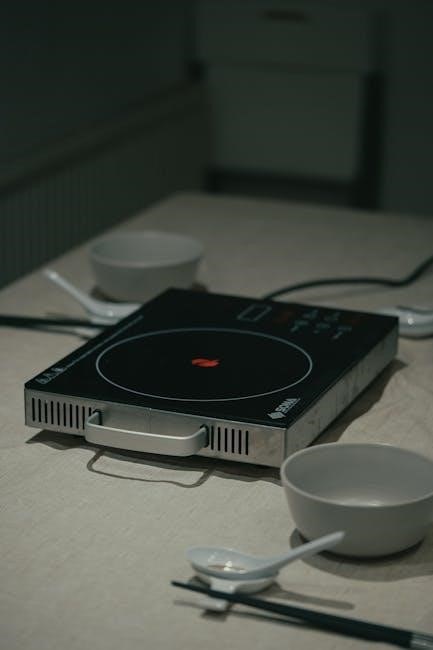



Leave a Reply
You must be logged in to post a comment.